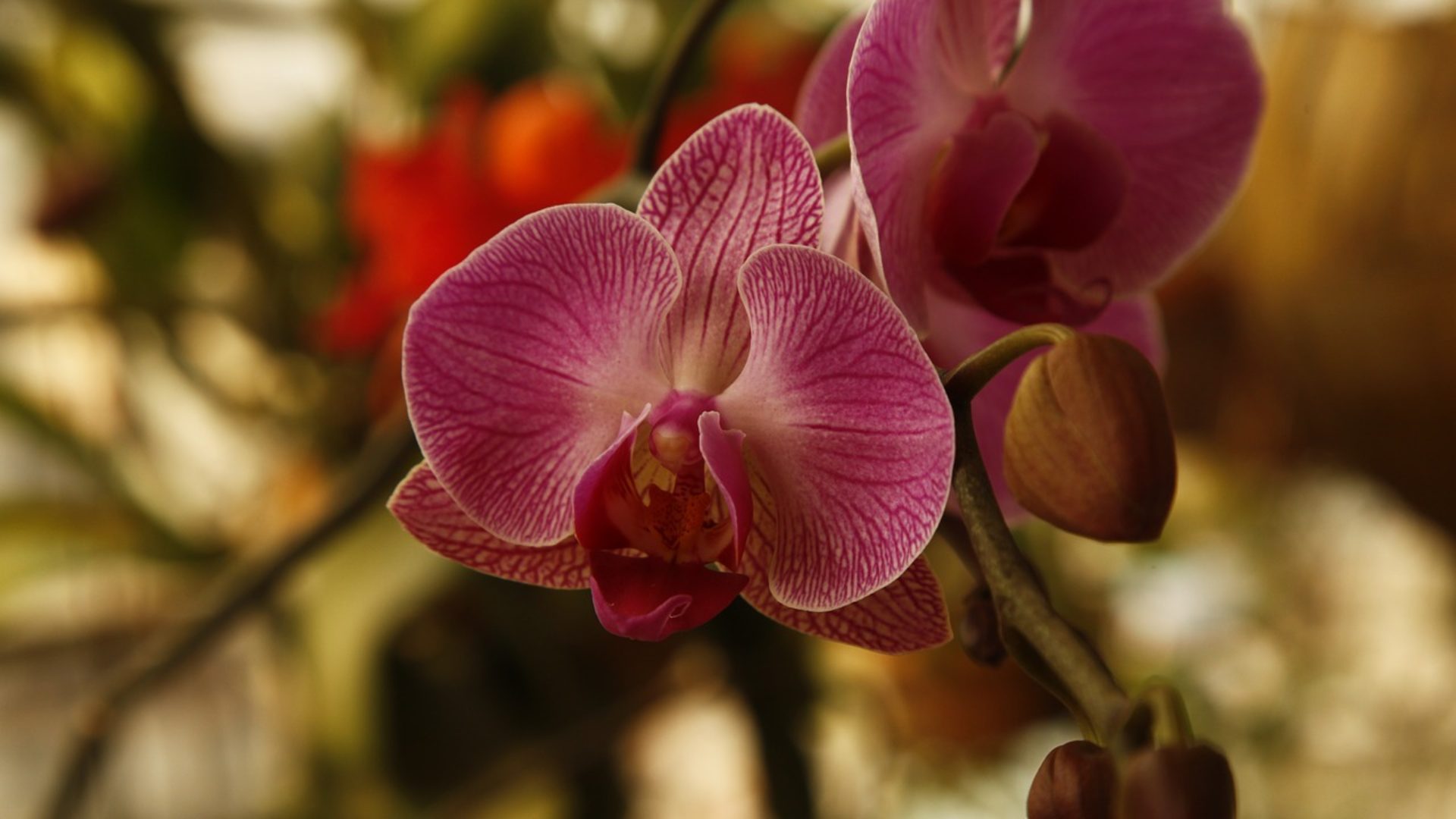Indoor orchids are primarily epiphytic (growing on trees) or lithophytic (growing on rocks). In their natural habitat this means using trees or rocks as a support and feeding from plant debris accumulated around their roots.
Many orchids can be grown in containers that are filled with open, free draining cases with orchid compost. They often make aerial roots exist outside of the container.
Re-pot only when the roots have made the pot full, using a container which is only one or two sizes larger. Do not try to bury the aerial roots in the compost, because they may rot.
Temperature and light
Orchids like a variety of temperatures, then choose the best position in the house to suit the needs of the especial orchid you are growing.
For orchids that are cool they require a minimum winter night preferably with temperatures close to 10°C. A porch, heated conservatoire or unheated indoor room would be perfect. If grown in warmer environment, their flowering is often lowered. They can be put outdoors in summer in a position which is producing shade.
Intermediate temperature orchids like a minimum temperature of 13-15°C
Warm-growing orchids such as the ever popular Phalaenopsis get pleasure from rooms indoor conditions all the year round, with a minimum temperature requirement of 18°C (65°F).
Orchids usually enjoy bright but filtered light. They require protection from direct sunshine.
Watering, humidity and feeding
Orchids like high air humidity, but their roots will rot easily in wet compost. Water them around once a week, perfectly using lukewarm rainwater. Water from above and pour out any water that accumulates in the saucer under the pot. Alternatively, plunge the container into a bucket of water and allow to drain completely.
Mist the foliage and aerial roots daily, or put the pot upright on a wide saucer become full with gravel, making the saucer full with water to just below the surface of the gravel.
Reduce humidity in winter if temperatures are lower (this applies to orchids grown in porches or conservatoires rather than those grown indoors, where temperatures are constant or may even rise in winter with central heating).
Orchids have different feeding needs but are not usually heavy feeders. As a general rule feed with a liquid orchid fertiliser every third watering during the growing season.
Many orchids require a rest period, usually during the winter months, when watering and feeding should be cut.
Repotting
Repot every two years regardless of whether the orchid has grown out of its pot, because older orchid compost breaks down, preventing air getting to the roots which leads to disease. Always use proprietary bark-based orchid compost, never a loam-based or standard multipurpose one because these will completely destroy your orchid.
If the remaining roots comfortably fit the old pot after removing the old compost and any dead roots, then it is best to reuse it, when repotting monopodial orchids such as Phalaenopsis. Too large a pot means the compost will dry out too slowly after watering, leading to root rot. Do not try to bury the aerial roots in the compost, because they may rot. Phalaenopsis can be repotted at any time of year.
With sympodial orchids such as cymbidiums which produce pseudobulbs (bulb-like stems attached to a short rhizome), use a pot which is just wide enough to allow for two years’ new growth. Cymbidiums are best repotted in spring only after flowering.

8 thoughts on “Orchids: Indoor Cultivation”
il me semble c’est la phrase magnifique
I have not checked in here for a while since I thought it was getting boring, but the last several posts are good quality so I guess I will add you back to my everyday bloglist. You deserve it my friend 🙂
Encuentro que no sois derecho. Puedo demostrarlo.
A mio parere, si sbaglia. Dobbiamo discutere. Scrivere a me in PM, ti parla.
I like this webpage, it seems you promote new content on a regular basis
Hey There. I found your blog using msn. That is a really smartly written article. I will make sure to bookmark it and return to learn extra of your useful info. Thank you for the post. Ill definitely comeback.
Felicito, que palabras adecuadas…, el pensamiento excelente
If you are interested indoor cultivation techniques then you must read this piece of writing, I am sure you will get much more from this post on the topic of orchid cultivation.